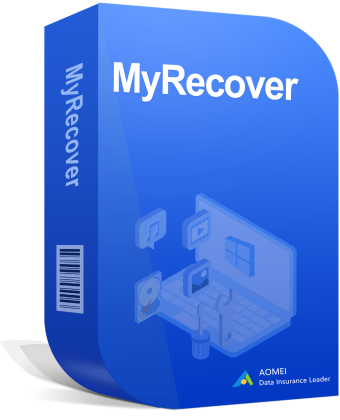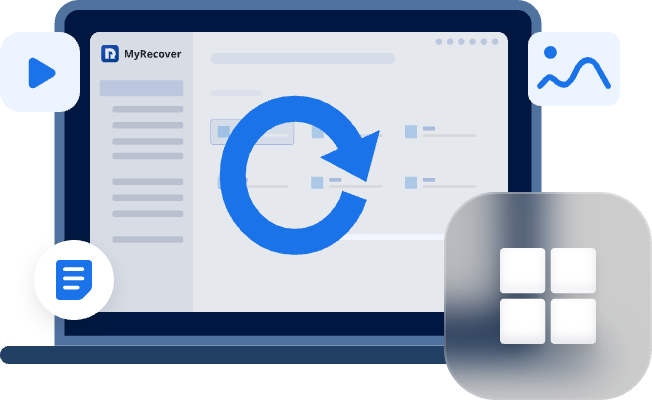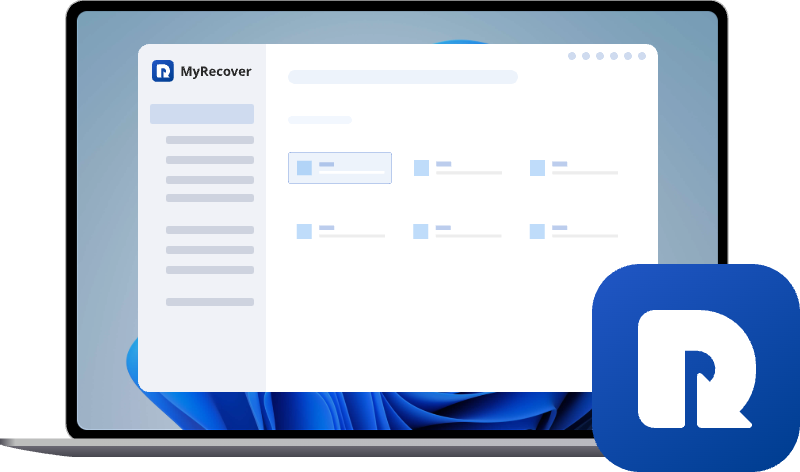Expert SanDisk CF Card Recovery Guide: Recover Lost Photos Now
This guide provides a comprehensive overview of the best methods for SanDisk CF card recovery. We will explore common data loss scenarios and review top-rated SanDisk recovery software solutions to help you safely retrieve your precious photos and critical files from any CompactFlash card. Learn the steps to get your data back.
How to Recover Files from a SanDisk CF Card?
How to recover corrupted memory card data?
Hi there, I have been using a 64GB SanDisk memory card for a long time, and I recently connected my phone to my computer, but I can't view my data since it's showing some corrupted files, and clicking there only shows formatted alternatives, but I need a backup of my memory card because I have essential files on it…Could someone please assist me in retrieving my data?
- Question from forums.sandisk.com
When your camera displays a dreaded error message, or your computer fails to recognize the SanDisk CompactFlash card containing all your photos. It's a sinking feeling for all of us. But don't worry, know this: in a vast number of cases, your files are not gone for good.
Successfully navigating SanDisk CF card recovery is often entirely possible, turning that despair into immense relief. This guide will walk you through everything from why this happens to how you can safely get your precious data back into your hands. We'll provide a clear, actionable path forward.
Why SanDisk CF Card Need to Be Recovered?
SanDisk CompactFlash (CF) cards have been the workhorse of professional photography and videography for years, prized for their durability and high-speed performance. But like any storage device, they're not invincible. There are some factors for SanDisk CF card corruption:
⭕ Or you unplug the card reader from your computer without safely ejecting it first.
⭕ Accidentally formatted the CF card, and you thought you had backed it up.
⭕ Faulty card readers that deliver unstable power.
⭕ Simple physical wear and tear over thousands of read/write cycles.
Signs Your SanDisk CF Card Needs Recovery
How do you know if you're facing a corruption issue? If you are facing the following situations, you might consider recovering files from a SanDisk CF card:
- SD card not showing up in File Explorer.
- SD card displays as RAW.
- SD card suddenly shows empty, files are missing.
- A read-write error occurred on your SD card… SD is write-protected, locked, or read-only.
- "SD card is damaged. Try reformatting it" error message.
- SD card freezes or gets stuck.
- Failed to load photos in the SD card.
- The SD card is not detected, not recognized, and shows no media in Disk Management.
Immediate Actions to Take After Data Loss
The moment you realize something's wrong, your immediate actions are critical. First, don't panic! Stop using the card immediately. Every single action you take—taking one more photo, trying to save a file, or even scanning it with antivirus software—risks overwriting the deleted data, making it permanently unrecoverable.
Remove the card from your camera or reader and set it aside. Please don't try to format it, even if your device prompts you to format. Your goal is to freeze the card in its current state until you are ready to run a dedicated SanDisk CF card recovery software.
Best SanDisk CF Card Recovery Software - MyRecover
How to recover files from a corrupted SanDisk CF card easily? Fortunately, here comes the powerful Windows data recovery software MyRecover to help. With MultCloud, you can enjoy:
- High-Speed Scanning: Features a fast scanning engine that locates lost files quickly, saving you valuable time.
- Deep Scan Capability: Performs a thorough, sector-by-sector analysis to find and recover a wide range of file formats.
- User-Friendly Interface: Offers an intuitive design that makes the data recovery process simple for users of all skill levels.
- Selective File Preview: Allows you to preview files before recovery, enabling you to choose only the specific items you need.
- Read-Only Operation: Ensures a safe recovery process that does not overwrite or damage the original data on your storage device.
- Versatile Recovery: Effectively restores data lost due to accidental deletion, formatting, virus attacks, or system crashes.
So, how to perform SanDisk Compact Flash recovery with MyRecover? Check the simple guide:
1. Please connect your SanDisk CF card to your Windows computer using a CF card reader. Download and install MyRecover now.
2. Launch MyRecover, choose USB/SD Card Recovery, choose the SanDisk CF card, and hit Scan.
3. Once the scanning is finished, hit OK.
4. Choose the files you need to recover, and hit Recover.
5. It will prompt you to choose a safe location (instead of the SanDisk CF card) to save these recovered files.
- Tips:✎...
- You can also recover files from an unbootable computer with a bootable USB to minimize the data loss.
- If you’re an administrator of an organization, you might need to recover files from unlimited computers, MyRecover Technician is your best choice.

- Recover Deleted Files Easily with Simple Clicks
- 1000+ File Formats Supported
- Support HDD, SSD, External Hard Drive, USB Drive, SD Card, etc.
- Quickly Find Files Using File Types, Name, Size, etc.
- Preview Files Before Recovering
- Recover Unlimited Data
How to Fix A Corrupted SanDisk CF Card?
After recovering files, you can fix the corrupted SanDisk CF card now!
Way 1. Try CHKDSK
First things first, try connecting your SanDisk memory card to the computer via a card reader. Your SD card might be experiencing compatibility issues or file system corruption. To fix it, follow the given steps using CHKDSK:
1. Open Admin Command Prompt
In the Windows search bar, type cmd. Right-click the Command Prompt result and choose "Run as administrator".
2. Execute the CHKDSK Command
In the command window, type chkdsk g: /f /r and press Enter. Remember to replace the g with the actual drive letter of your SanDisk CF card (e.g., chkdsk E: /f).
3. Review the Results
Once the process finishes, CHKDSK will present a report of its results.
CHKDSK is designed to fix logical file system errors. It cannot repair a physically damaged card or one that the computer fails to detect. In such cases, professional data recovery services are recommended.
Way 2. Format The SanDisk CF Card
After recovering files or if the files are not crucial for you, you can directly format the SanDisk CF card now. SanDisk provides professional software called SanDisk Full Format and Refresher for you to format it. Here is how it works on Windows 10/11:
1. Download and Install SanDisk Full Format and Refresher.
2. Connect your SanDisk CF card with a card reader to a USB 3.0 port.
3. Open Full Format and Refresher, ensure all the check marks are green, and hit Full Format.
4. Then follow the guide to format the SanDisk CF card safely.
Way 3. Repair or Replace Another SD Card for Your Device
If your card is physically damaged—you can see bent pins, cracks, or it's been exposed to water. In these scenarios, continuing to power the card on could cause further, irreversible damage. So, you can try to recover files with a Professional data recovery labs that operate in certified cleanrooms. They can replace damaged controllers and even access the raw NAND flash memory chips directly. This service is expensive.
If your data is not important, you can try to replace the SanDisk CF card directly.
FAQs About SanDisk CF Card Recovery
Q: Can I recover files from a SanDisk CF card after formatting?
A: Yes, you usually can. Formatting marks space as "available" but doesn't erase data. A tool like MyRecover can scan and rebuild these files, provided you stop using the card immediately to prevent overwriting.
Q: What should I do if my computer doesn't recognize my SanDisk CF card?
A: First, try a different USB port, card reader, or computer. If it's still not detected, the card may have a hardware issue, and a professional recovery service is your best option.
Q: How long does the SanDisk CF card recovery process usually take?
A: It varies. A quick scan on a small card takes minutes. A deep, thorough scan on a large-capacity card can take several hours to complete.
Q: Can I recover RAW photo files from a corrupted SanDisk CF card?
A: Yes. Professional recovery software can recognize and reconstruct various RAW formats (like .CR2, .NEF), allowing you to recover them alongside other file types.
Q: What is the difference between file recovery and card repair?
A: File recovery extracts your existing data from the card onto a safe location. Card repair fixes the card's file system, often by formatting it, which erases your data. Always attempt recovery first.
The End
Until now, your SanDisk CF recovery should have been done with a powerful SanDisk recovery software like MyRecover. Besides, you can also recover files from a formatted SSD, recover files from an emptied recycle bin, etc.


